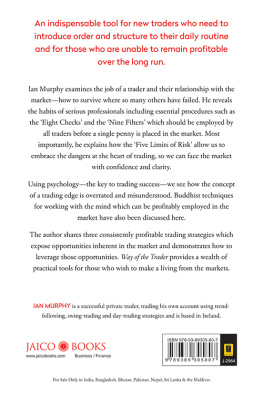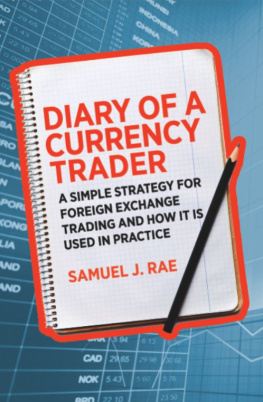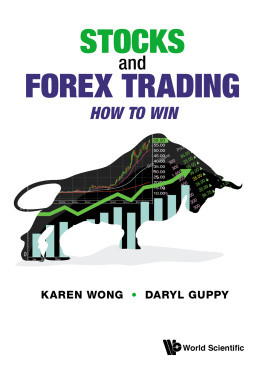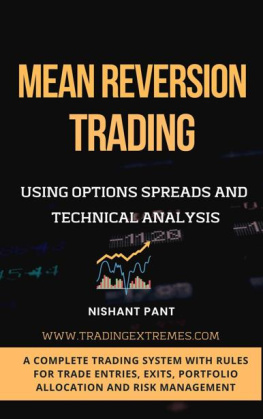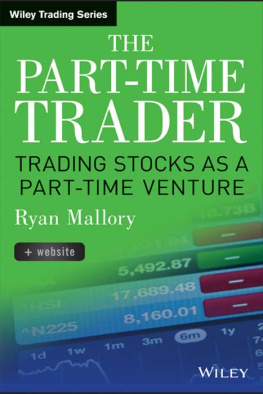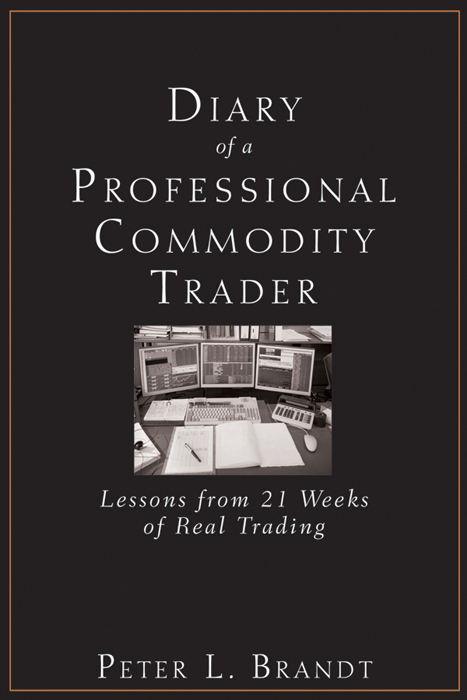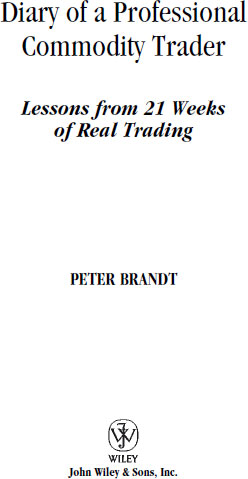Copyright 2011 by Peter Brandt. All rights reserved.
Published by John Wiley & Sons, Inc., Hoboken, New Jersey.
Published simultaneously in Canada.
No part of this publication may be reproduced, stored in a retrieval system, or transmitted in any form or by any means, electronic, mechanical, photocopying, recording, scanning, or otherwise, except as permitted under Section 107 or 108 of the 1976 United States Copyright Act, without either the prior written permission of the Publisher, or authorization through payment of the appropriate per-copy fee to the Copyright Clearance Center, Inc., 222 Rosewood Drive, Danvers, MA 01923, (978) 750-8400, fax (978) 646-8600, or on the Web at www.copyright.com . Requests to the Publisher for permission should be addressed to the Permissions Department, John Wiley & Sons, Inc., 111 River Street, Hoboken, NJ 07030, (201) 748-6011, fax (201) 748-6008, or online at www.wiley.com/go/permissions .
Limit of Liability/Disclaimer of Warranty: While the publisher and author have used their best efforts in preparing this book, they make no representations or warranties with respect to the accuracy or completeness of the contents of this book and specifically disclaim any implied warranties of merchantability or fitness for a particular purpose. No warranty may be created or extended by sales representatives or written sales materials. The advice and strategies contained herein may not be suitable for your situation. You should consult with a professional where appropriate. Neither the publisher nor author shall be liable for any loss of profit or any other commercial damages, including but not limited to special, incidental, consequential, or other damages.
For general information on our other products and services or for technical support, please contact our Customer Care Department within the United States at (800) 762-2974, outside the United States at (317) 572-3993 or fax (317) 572-4002.
Wiley also publishes its books in a variety of electronic formats. Some content that appears in print may not be available in electronic books. For more information about Wiley products, visit our web site at www.wiley.com .
ISBN 978-0-470-52145-8 (cloth); ISBN: 978-0-470-94724-1 (ebk);
978-0-470-94725-8 (ebk); 978-0-470-94726-5 (ebk)
This book is dedicated to my wife, Mona, and my children, who for more than 30 years have tolerated the ups and downs of the life of a commodity trader.
Also to some very dear folks I refer to as the Factor family, about two dozen fellow commodity traders who, since 1980, have served as a sounding board as I developed my trading plan and honed my craft.
Acknowledgments
Iowe a debt of real gratitude to my friend Dave Forbes, CEO of Petra Financial in Colorado Springs, who allowed me to use his office and staff to prepare this book.
I am also in debt to Glen Larson and his awesome team at Genesis Financial Technology, who provide me with assistance in preparing the charts for this book. I use the Genesis data and charting platform, TradeNavigator, in my own trading and have found Glen and his team to be real partners in my market operations.
Dan Chesler, President of Chesler Analytics (a firm providing technical market research to energy traders) originally suggested that I write this book. Dan and I go back several decades as peers. If you have ever written a book, you will understand it when I say that I dont know whether to thank Dan or curse at him for encouraging me.
Finally, I want to thank Meg Freeborn and Kevin Commins of John Wiley & Sons for hanging with me during this process. I started this book in early 2009, but for health reasons I was sidetracked for nearly nine months. Meg and Kevin demonstrated great patience and guidance to get this project back on track.
Part I
Foundations of Successful Trading
Is trading an art, or is it a science? Or is it some combination of the two? I am not sure of the answers to these questions. I am not sure it is necessary to know the answers. I view trading as a craft. A successful trader is a craftsman, applying his or her skills in the same way as a baseball pitcher who has perfected throwing a knuckleball, or a welder specializing in joining together exotic metals, or a software engineer who overcomes complex problems to design new chip technology.
All craftsmen undergo apprenticeships. An apprenticeship is not some specified period of time in a specified classroom or training grounds. Rather, an apprenticeship is a composition of personal, professional, and proprietary experiences that lead to the knowledge and skills to perform a craft.
Part I of this book relates my apprenticeship as a trader and provides context and background to all that follows in the book. Part I contains two sections:
An Introduction to my background and history as a trader, the reasons I decided to write this book, a road map to the book, and what I hope this book accomplishes
A brief overview of classical chart principles, the foundation of my trading approach
Part I lays the foundation for the architectural design of my trading plan, which is detailed in Part II.
Introduction
One of the first things I check out in a new book is the number of pages prior to Chapter long book introductions put me to sleep. I will assume that most of you are like meyou want to cut to the chase. The last thing I wanted to do was write a book with a lengthy introduction, but my opinion has changed now that Im on the authors side of the equation. It turns out introductions can be useful in providing necessary context and perspective for a book. And so, please forgive me for committing the sin I have always dislikedI think it will be worth it.
This is a book about me as a trader of commodity and forex markets and how I use price charts in my craft. I think of it as a mosaic: eventually the parts of this book will tie together in the same way that a good mosaic becomes visible only in its entirety. Piece by piece or section by section, a mosaic makes no sense. Only at a distance and in its fullness does a mosaic gain clarity and perspective. The concept of a mosaic describes how this book will unfold. First, a bit about how I got started in the business.
The Invention of a Commodity Trader
In 1972, shortly after graduating from the University of Minnesota with a degree in advertising, I moved to Chicago to work for one of the nations largest ad agencies. A neighbor was a trader at the Chicago Board of Trade (CBOT). Through our conversations and my visits to see him on the trading floor, I became captivated by the futures markets. In commodity trading I saw the opportunity to earn a good living, work for myself, and be challenged in a very exciting field. In short, I became hooked.
Everybody started in the commodity field at the bottom. Being hired at a sizable salary was not a reality of the business. I needed a plan B if I were to quit advertising and enter the commodity field. So, I asked the president of the advertising agency if he would hire me back at a 30 percent increase in salary if I quit, tried the commodity business for a year unsuccessfully, and reapplied for my old job. He agreed to the deal.
I entered the commodity business in 1976 when I was in my 20s with the singular goal of trading my own personal account. But I needed to learn the ropes first.
When I entered the business, most traders at the CBOT (as well as the Chicago Mercantile and the New York commodity exchanges) started at or near the bottom of the pecking order. The same thing exists to this day. An MBA fast track has never really existed in the trading pits. The learning curve is steepthe washout rate is high.


